How to Make Almost* Anything | MAS.863
Ella Peinovich | M.Arch Level III, MIT
Ella Peinovich | M.Arch Level III, MIT
Laser cut Sculptural Wall Module
In pursuit of my final proposal, I decided to use this week's project to further my knowledge of the structural configuration of a dual-sided wall system. I studied the use of surface folds to create a sculptural result from a flat surface. Through the use of the single laser cut unit multiplied any number of times one can create a wall system at nearly any size.
Admittedly, I did not create a press-fit assembly kit, but rather a tension fit one. To that point, scalability of the cut-file itself is the current limitation of a tension-fit design. Through explorations of the material flexibility one could assume that through a number of score operations on the surface face any material could be used. The resolution, or intergrals, of the scores would need to be directly related to the ratio of the severity of the curvature and the stiffness of the material.
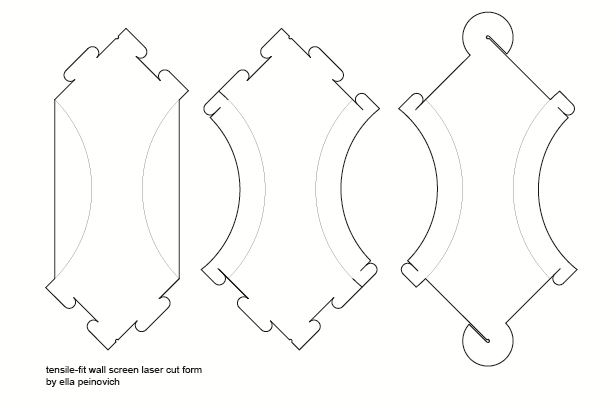
Click here for tension-fit laser file
The cut file consists of one unit that can be multiplied many times. Notice the use of a circular cut-out to reduce material at the intersection point of more than 2 units. Both cut and score lines are required. To minimize burning for 100lb Bristol board I used the settings Cut: speed 10, power 10 & Score: speed 20, power 5.

first attempts at a laser cut unit from bristol board
I later modified the connection to be less fussy and more elegant.

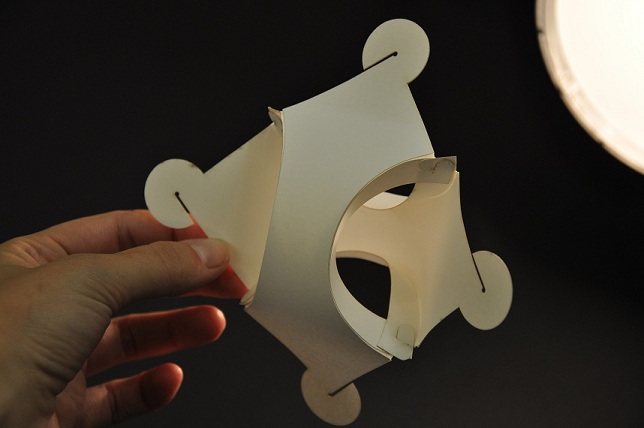
cut unit and assembly of final composite module
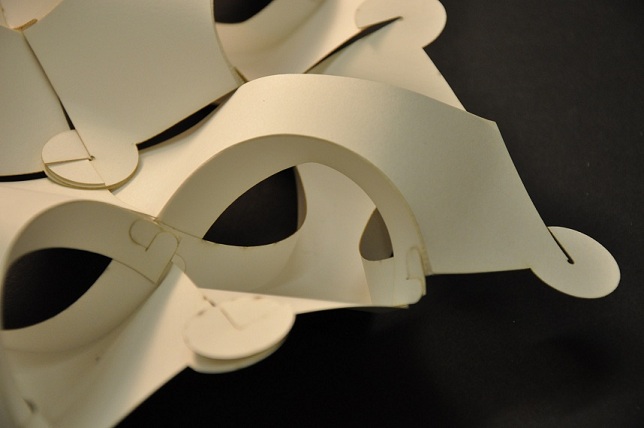
module within the wall unit
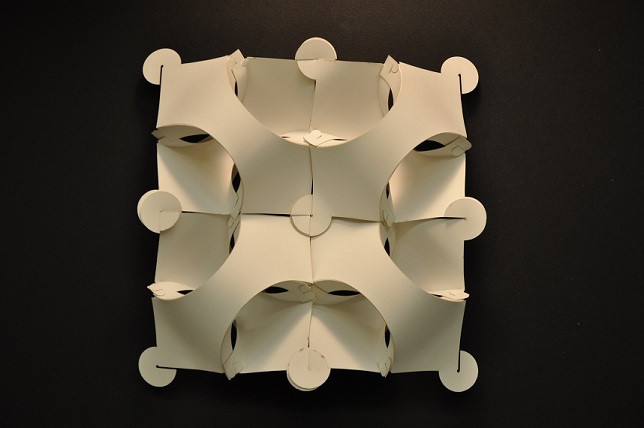
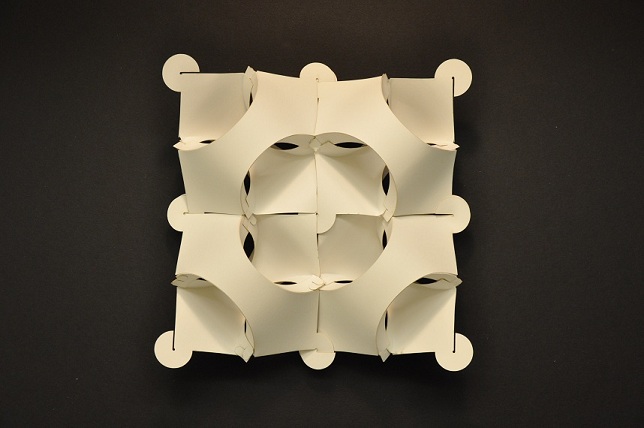
dual-sided wall unit
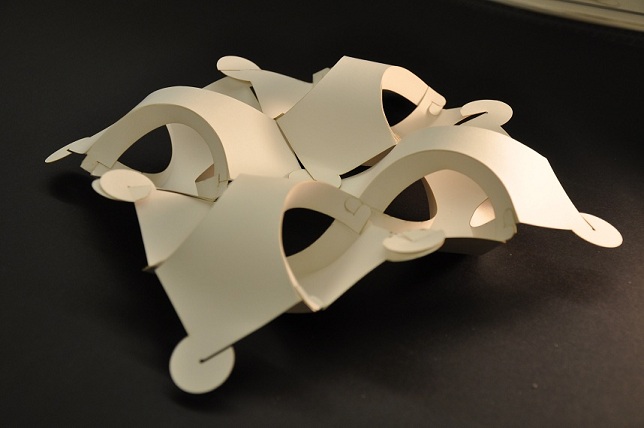
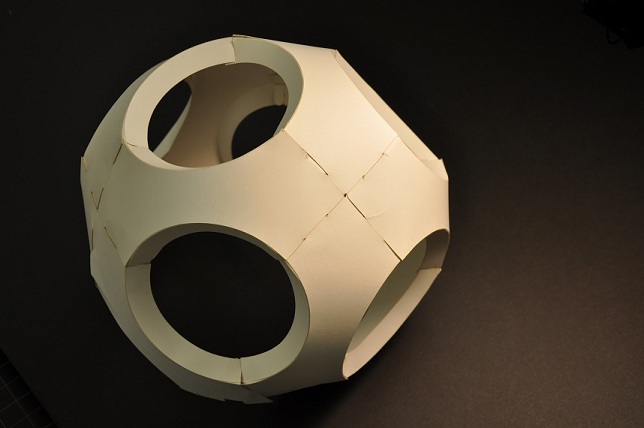
Some interesting discoveries occurred.... Because the modules are based in simple logic the unit can also be used to create other tensile surface stuctures, like this ball.